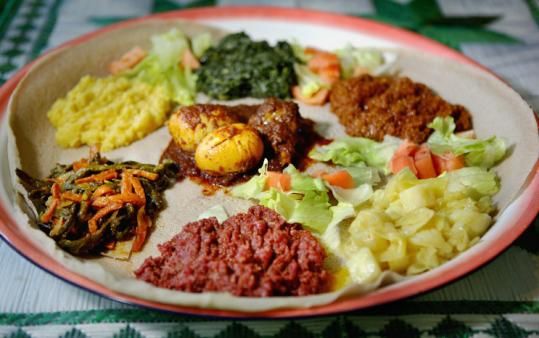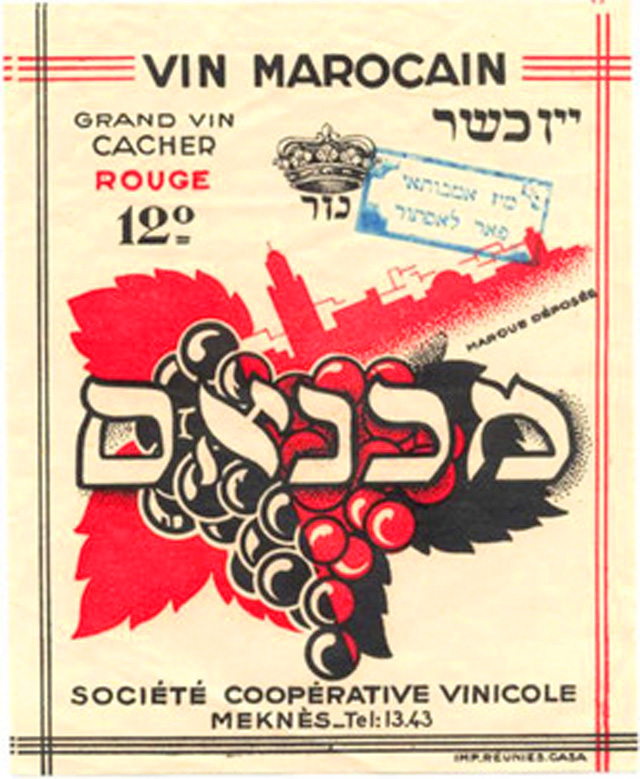|
Tella (SV)
''Tella'' or ''talla'' (Amharic ጠላ; , ) is a traditional beer from Ethiopia. It is brewed from various grains, which can change depending on location. These typically include barley or teff. Depending on region, wheat, sorghum, or corn may be used; spices can also be added. Dried and ground shiny-leaf buckthorn leaves are used for fermentation. The drink is made in a clay pot. The pot is washed with a plant called '' grawa''. After rinsing it is smoked with '' weyra'' or Abyssinian rose. The alcohol content of tella is usually around 2–4 volume percent. Tella is often home-brewed. It may be offered in tella houses (''tellabet'') or served in the home. In urban areas, the drink is used on special occasions like holidays or weddings. Tella was commonly used for kiddush by the Beta Israel (Ethiopian Jews). Tella was used because wine was often unavailable. Due to the availability of wine in Israel, Ethiopian-Israelis generally use wine for kiddush instead of tella. See als ... [...More Info...] [...Related Items...] OR: [Wikipedia] [Google] [Baidu] |
Otostegia Integrifolia
''Otostegia integrifolia'', more commonly known as Abyssinian rose, a plant belonging to the family Lamiaceae, is endemic to Ethiopia, in the dry evergreen woodlands of the Bale Mountains, Tigray, Gondar, Wollo and Gojjam regions, North Shewa, Kaffa and Hararghe regions, as well as in the dry and moist agroclimatic zones of the district known as Dega, at altitudes of 1,300—2,800 m. above sea-level. It also grows in Yemen, northwest of Mukalla. In Ethiopia, ''O. integrifolia'' is commonly known by its Amharic vernacular of ''tinjute'' = ጥንጁት (alt. sp. ''Tindjut''). Description A much-branched shrub, growing to a height of 4 m; the stem angled and older stems ash grey and flaking, often bearing paired spines at the nodes. Leaves are simple, nearly sessile, ob-lanceolate to lanceolate, 2–9 cm long, cuneate at the base, clothed on both sides with white tomentum; aromatic, the edge double toothed or round toothed. Flowers are two-lipped with yellow or yellow-ora ... [...More Info...] [...Related Items...] OR: [Wikipedia] [Google] [Baidu] |
Types Of Beer
Beer styles differentiate and categorise beers by colour, flavour, strength, ingredients, production method, recipe, history, or origin. The modern concept of beer styles is largely based on the work of writer Michael Jackson in his 1977 book ''The World Guide To Beer''. In 1989, Fred Eckhardt furthered Jackson's work publishing ''The Essentials of Beer Style''. Although the systematic study of beer styles is a modern phenomenon, the practice of distinguishing between different varieties of beer is ancient, dating to at least 2000 BC. What constitutes a beer style may involve provenance, local tradition, ingredients, aroma, appearance, flavour and mouthfeel. The flavour may include the degree of bitterness of a beer due to bittering agents such as hops, roasted barley, or herbs; and the sweetness from the sugar present in the beer. Types Many beer styles are classified as one of two main types, ales and lagers, though certain styles may not be easily sorted into either cate ... [...More Info...] [...Related Items...] OR: [Wikipedia] [Google] [Baidu] |
Eritrean Cuisine
Eritrean cuisine is based on Eritrea's native culinary traditions, but also arises from social interchanges with other regions. The local cuisine shares very strong similarities with the cuisine of neighboring Ethiopia with several dishes being cultural to both nations as a result of the two nations having been unified for hundreds of years. It also has influences from Italian cuisine due to the Italian colonization of the nation, and minor influences from other cuisines in the region. Overview Eritrean cuisine shares similarities with surrounding countries' cuisines; however, the cuisine has its unique characteristics. The main traditional food in Eritrean cuisine is '' tsebhi'' (stew), served with '' injera'' (flatbread made from teff, wheat, or sorghum and ''hilbet'' (paste made from legumes; mainly lentil and faba beans). A typical traditional Eritrean dish consists of ''injera'' accompanied by a spicy stew, which frequently includes beef, goat, lamb or fish. Overal ... [...More Info...] [...Related Items...] OR: [Wikipedia] [Google] [Baidu] |
List Of Ethiopian Dishes And Foods
This is a list of Ethiopian and Eritrean dishes and foods. Ethiopian cuisine, Ethiopian and Eritrean cuisines characteristically consists of vegetable and often very spicy meat dishes, usually in the form of ''wat (food), wat'' (also ''w'et'', ''wot'' or ''tsebhi''), a thick stew, served atop ''injera'', a large sourdough flatbread,Javins, Marie"Eating and Drinking in Ethiopia." Accessed July 2011. which is about in diameter and made out of fermented teff flour. People of Ethiopia, Ethiopians and People of Eritrea, Eritreans eat exclusively with their right hands, using pieces of ''injera'' to pick up bites of entrées and side dishes. Utensils are rarely used with Ethiopian and Eritrean cuisine. Ethiopian and Eritrean dishes and foods [...More Info...] [...Related Items...] OR: [Wikipedia] [Google] [Baidu] |
Siwa (beer)
Siwa (or Suwa) (), Amharic: ጠላ, is a beer originating from Tigray Region, Tigray. Traditionally home-brewed, ''siwa'' remains locally popular during social events, after (manual) work, and as an incentive for farmers and labourers. Thousands of traditional beer houses (''Enda Siwa'') straddle the Tigrayan urban and rural landscapes. ''Siwa'', the traditional beer of Tigray In almost every rural household of Tigray Region, Tigray, the woman knows how to prepare the local beer, ''siwa'' in Tigrinya language. Basic ingredients are water; a home-baked and toasted flatbread commonly made from barley in the highlands, and from sorghum, finger millet or maize in the lowlands; some yeast (''Saccharomyces cerevisiae''); and dried leaves of ''gesho'' (''Rhamnus prinoides'') that serve as a catalyst. The brew is allowed to ferment for a few days, after which it is served, sometimes with the pieces of bread floating on it (the customer will gently blow them to one side of the beaker). The ... [...More Info...] [...Related Items...] OR: [Wikipedia] [Google] [Baidu] |
Ethiopian Jews In Israel
Ethiopian Jews in Israel or Beta Israel are immigrants and descendants of the immigrants from the Beta Israel communities in Ethiopia. To a lesser extent, the Ethiopian Jewish community in Israel also includes Falash Mura, a community of Beta Israel who had converted to Christianity over the course of the prior two centuries, but were permitted to immigrate to Israel upon returning to Israelite religion—this time largely to Rabbinic Judaism. Most of the community made aliyah in two waves of mass immigration assisted by the Israeli government: Operation Moses (1984), and Operation Solomon (1991). Today, Israel is home to the largest Beta Israel community in the world, with about 168,800 citizens of Ethiopian descent in 2022, who mainly reside in southern and central Israel. History First wave (1934–1960) The first Ethiopian Jews who settled in Israel in modern times came in 1934 along with the Yemenite Jews from Italian Eritrea. Second wave: (1961–1975) Between 196 ... [...More Info...] [...Related Items...] OR: [Wikipedia] [Google] [Baidu] |
Israeli Wine
Israeli wine is produced by hundreds of Winery, wineries, ranging in size from small boutique enterprises to large companies producing over ten million bottles per year. Wine has been produced in the Land of Israel since biblical times. Wine was exported to Rome during the Roman period, but under the Early Muslim conquests, Muslim rulers the production was virtually wiped out. Under the Crusaders, winemaking was temporarily revived. The modern Israeli wine industry was founded by Baron Edmond James de Rothschild, owner of the Bordeaux wine, Bordeaux estate Château Lafite-Rothschild. Today, Israeli winemaking takes place in five vine-growing regions: Galil (Galilee, including the Golan Heights), the region most suited for viticulture due to its high elevation, cool breezes, marked day and night temperature changes and rich, well-drained soils; the Judean Hills, surrounding the city of Jerusalem; Shimshon (Samson), located between the Judean Hills and the Coastal Plain; the Negev, ... [...More Info...] [...Related Items...] OR: [Wikipedia] [Google] [Baidu] |
Kosher Wine
Kosher wine () is wine that is produced in accordance with ''halakha'', and more specifically ''kashrut'', such that Jews will be permitted to pronounce blessings over and drink it. This is an important issue, since wine is used in several Jewish ceremonies, especially those of Kiddush. To be considered kosher, Shabbat, Sabbath-observant Jews must supervise the entire winemaking process and handle much of it in person, from the time the grapes are loaded into the crusher until the finished wine product is bottled and sealed. Additionally, any ingredients used, including finings, must be kosher.T. Goldberg 'Picking the perfect Passover wine'' MSNBC, April 19th, 2004. Wine that is described as "kosher for Passover" must have been kept free from contact with chametz, leavened or fermented grain products, a category that includes many industrial additives and agents. When kosher wine is produced, marketed, and sold commercially, it would normally have a ''hechsher'' (kosher certifi ... [...More Info...] [...Related Items...] OR: [Wikipedia] [Google] [Baidu] |
History Of The Jews In Ethiopia
The history of the Jews in Ethiopia dates back millennia. The largest Jewish group in Ethiopia is the Beta Israel. Offshoots of the Beta Israel include the Beta Abraham and the Falash Mura, Ethiopian Jews who were converted to Christianity, some of whom have reverted to Judaism. Addis Ababa is home to a small community of Adeni Jews. Chabad also maintains a presence in Addis Ababa. Historical Early history (325– 1270) According to the Beta Israel tradition, the legendary Kingdom of Beta Israel, later called the Kingdom of Simien, was initially established after Ezana of Axum, Ezana declared Christianity as the official religion of the Kingdom of Aksum. The inhabitants who practiced Judaism refused to convert to Christianity and began revolting; this group was referred to as "Beta Israel". Following a civil war between the Jewish population and the Christian population, the Beta Israel were said to have forged an independent state located in the Semien Mountains region and the ... [...More Info...] [...Related Items...] OR: [Wikipedia] [Google] [Baidu] |
Beta Israel
Beta Israel, or Ethiopian Jews, is a Jewish group originating from the territory of the Amhara Region, Amhara and Tigray Region, Tigray regions in northern Ethiopia, where they are spread out across more than 500 small villages over a wide territory, alongside predominantly Christianity in Ethiopia, Christian and Islam in Ethiopia, Muslim populations. Most of them were concentrated mainly in what is today North Gondar Zone, Shire Inda Selassie, Welkait, Wolqayit, Tselemti, Dembia, Segelt, Qwara Province, Quara, and Belesa. After the founding of the Israel, State of Israel, most of the Beta Israel Aliyah, immigrated there or were evacuated through several initiatives by the Israeli government starting from 1979. The ethnogenesis of the Beta Israel is disputed with Genetic studies of Jews, genetic studies showing them to cluster closely with non-Jewish Amhara people, Amharas and Tigrayans with no indications of gene flow with Yemenite Jews in spite of their geographic proximity. ... [...More Info...] [...Related Items...] OR: [Wikipedia] [Google] [Baidu] |
Kiddush
Kiddush (; ), , is a blessing recited over wine or grape juice to sanctify the Shabbat and Jewish holidays. Additionally, the word refers to a small repast held on Shabbat or festival mornings after the prayer services and before the meal. Significance The Torah refers to two requirements concerning Shabbat – to "keep it" and to "remember it" (''shamor'' and ''zakhor''). Jewish law therefore requires that Shabbat be observed in two respects. One must "keep it" by refraining from thirty-nine forbidden activities, and one must "remember it" by making special arrangements for the day, and specifically through the ''kiddush'' ceremony. Reciting ''kiddush'' before the meal on the eve of Shabbat and Jewish holidays is thus a commandment from the Torah (as it is explained by the Oral Torah), although one can also fulfill the Biblical commandment by reciting Maariv of the Sabbath which also mentions the holiness of the day. Reciting ''kiddush'' before the morning meal on Shabbat ... [...More Info...] [...Related Items...] OR: [Wikipedia] [Google] [Baidu] |






